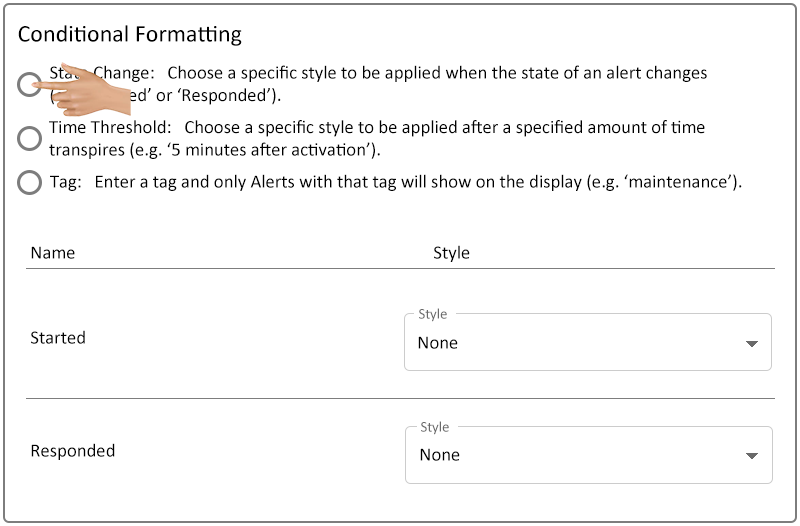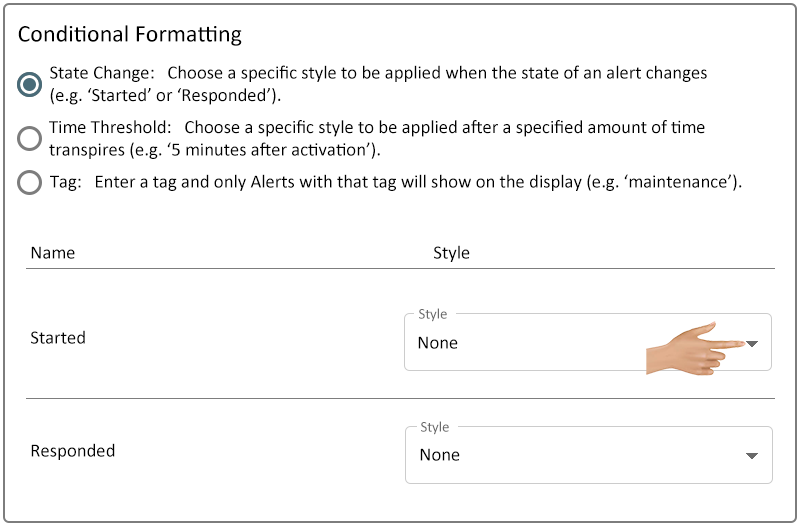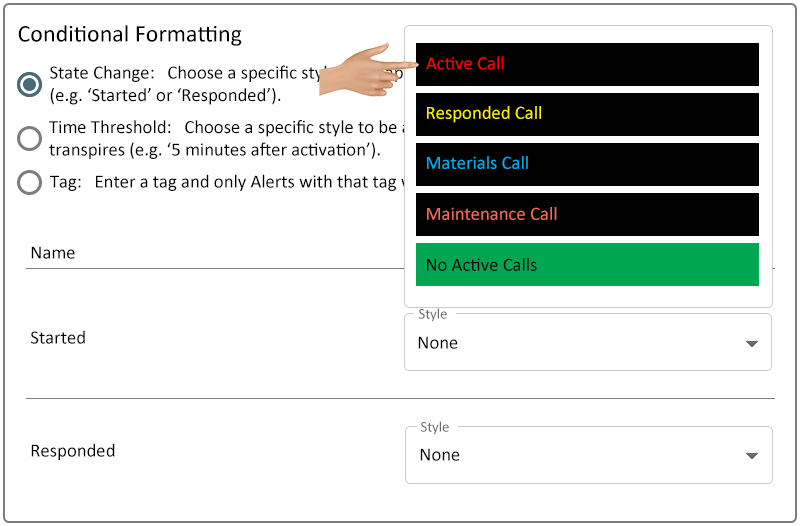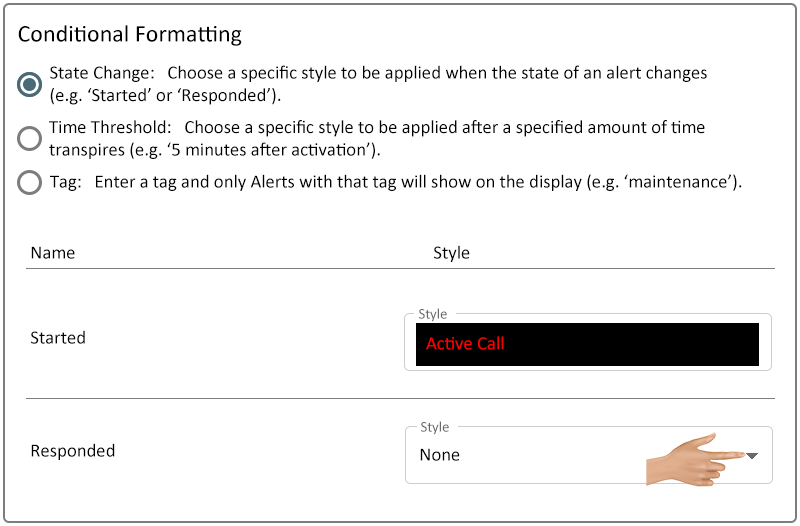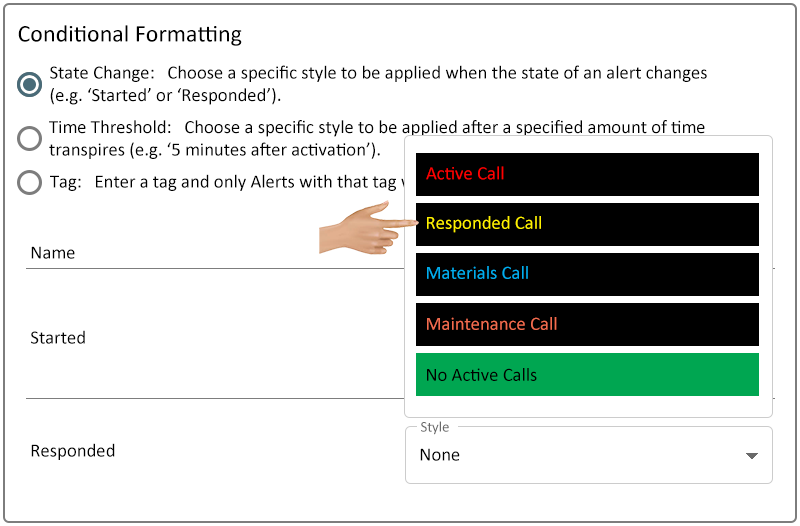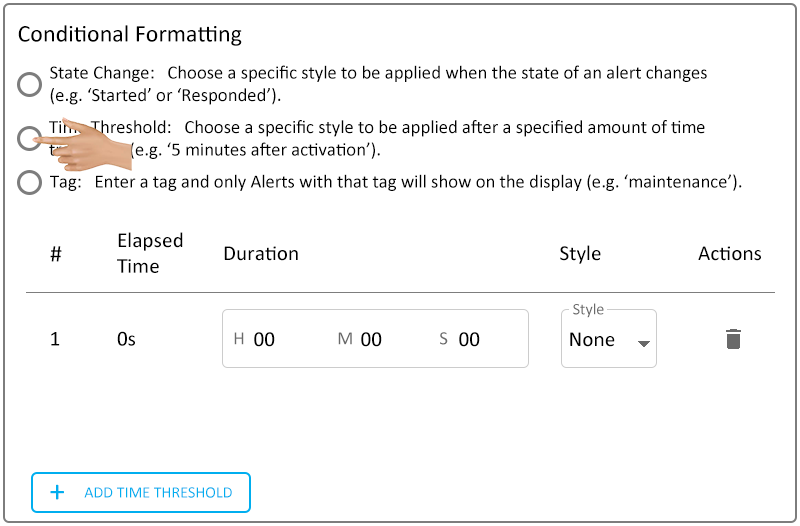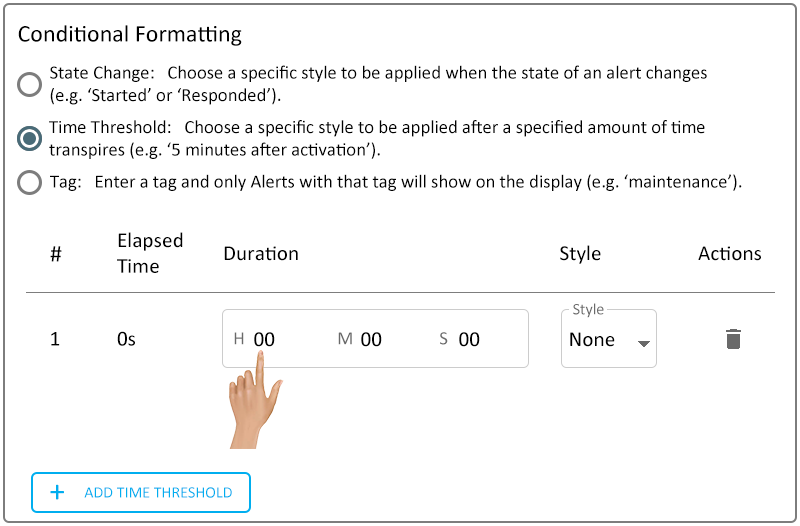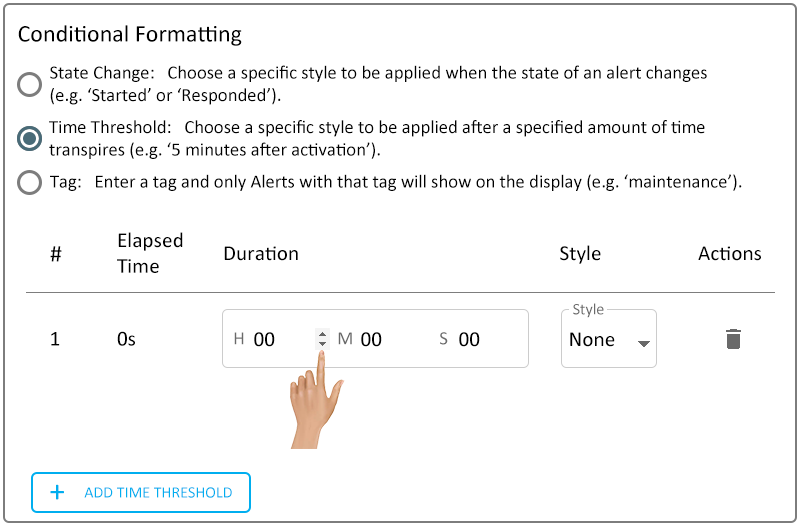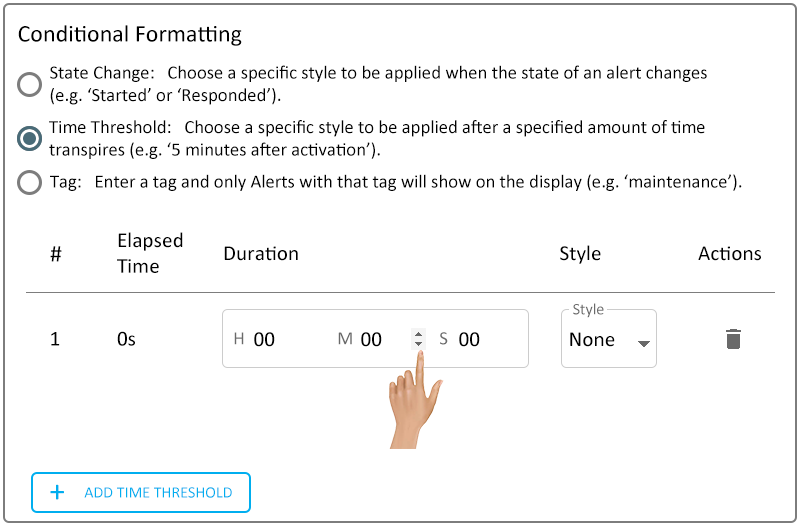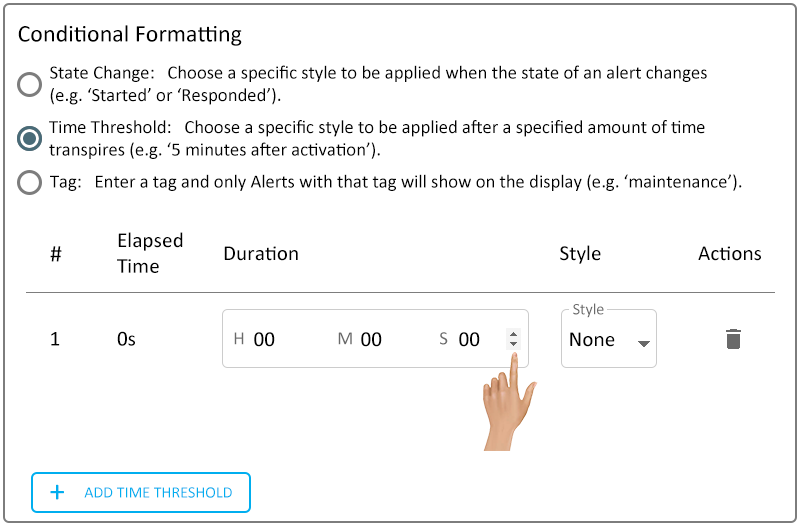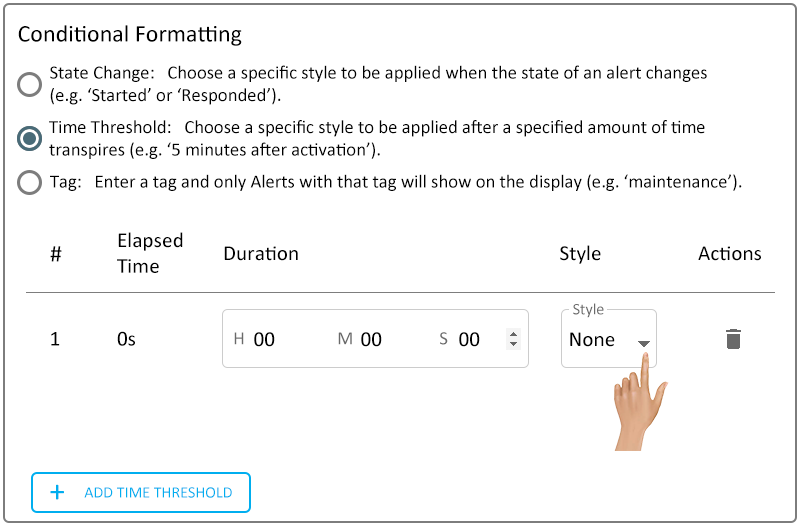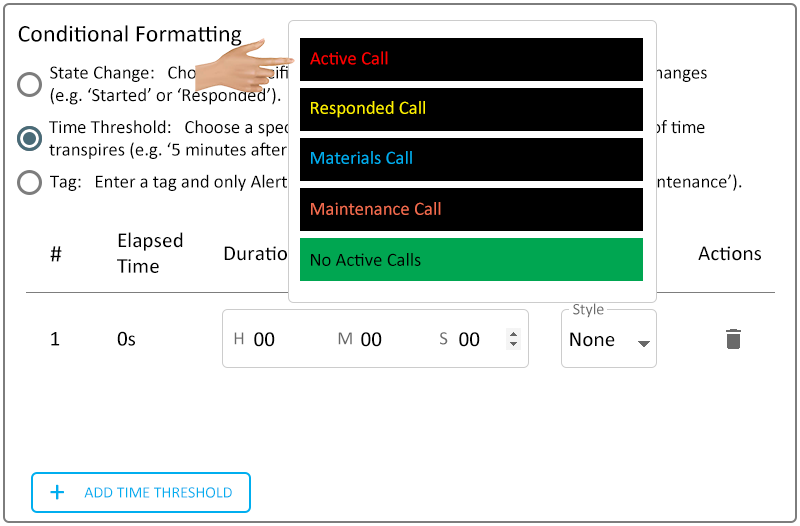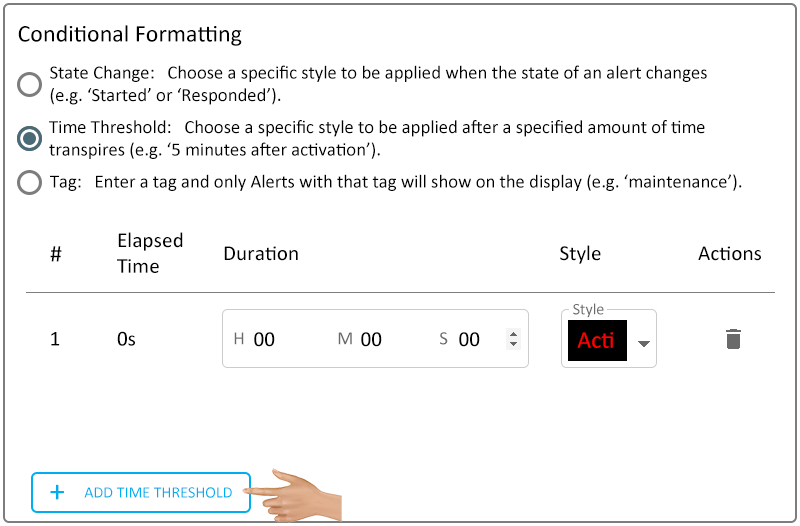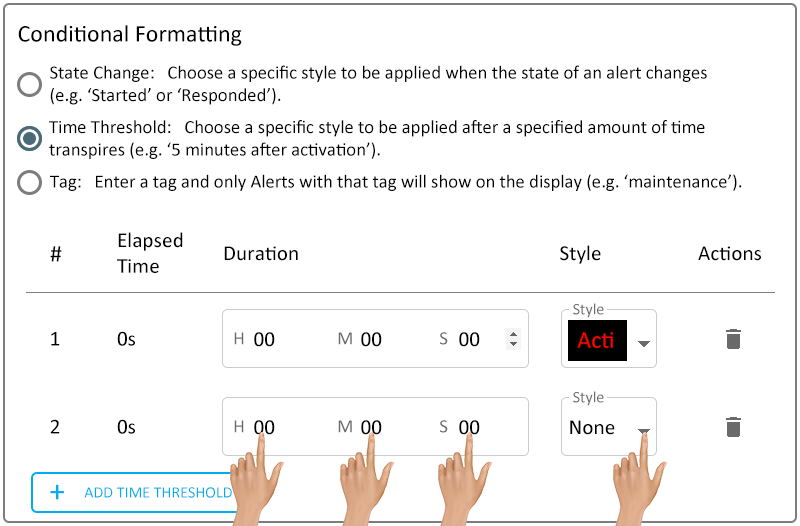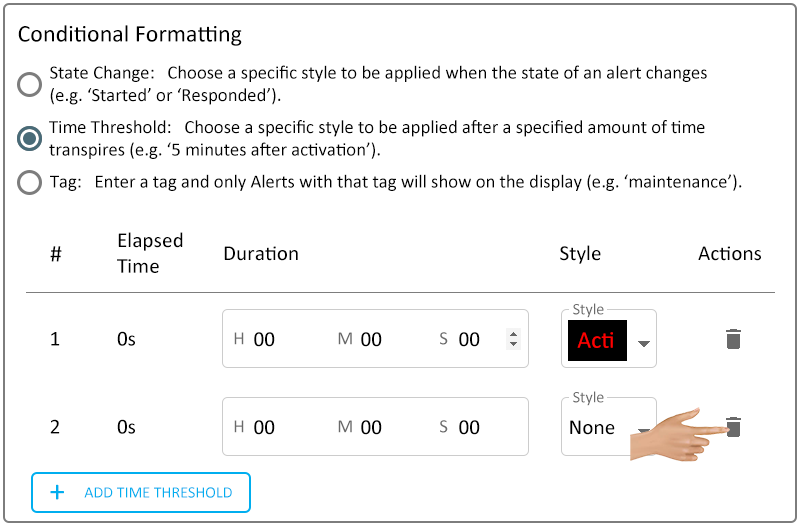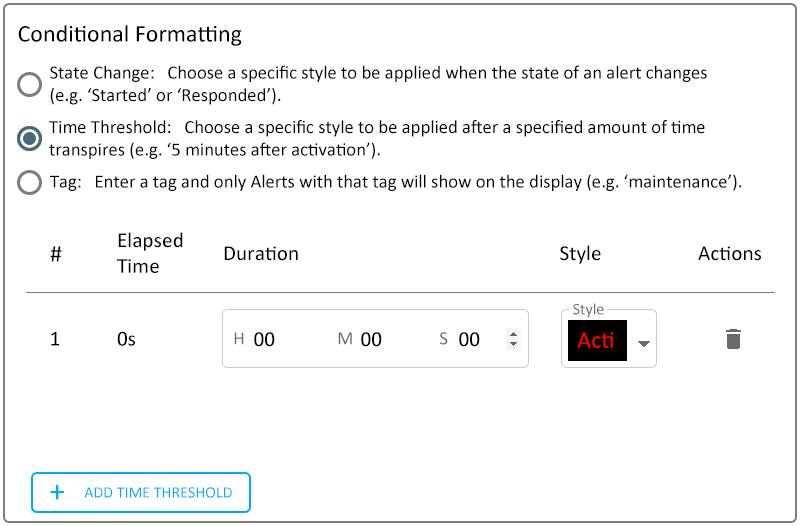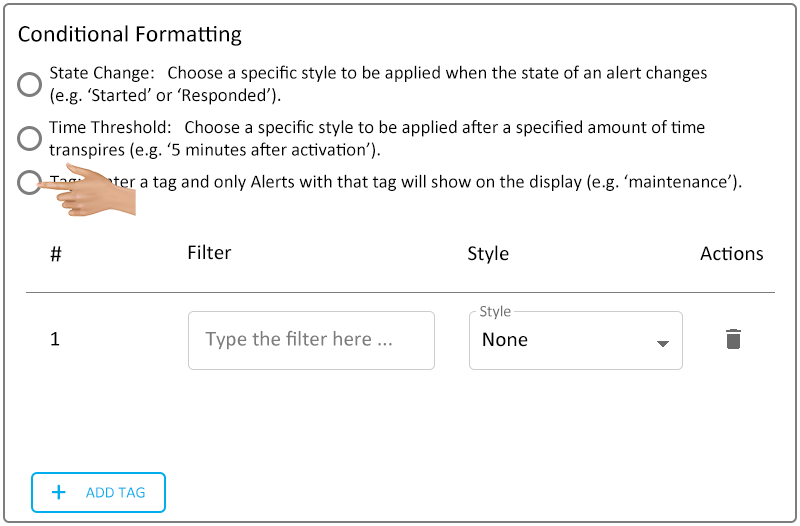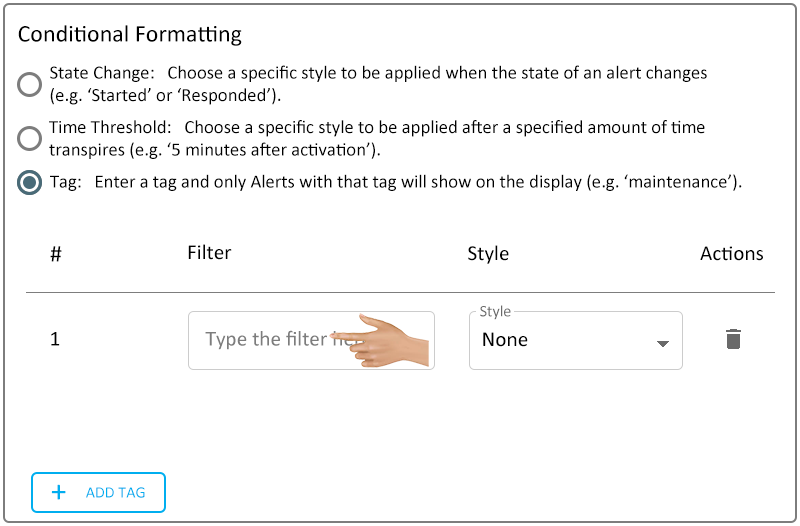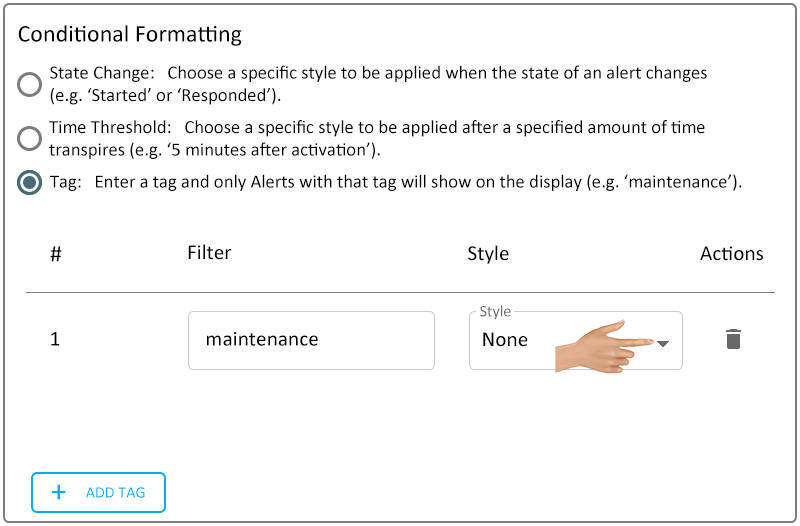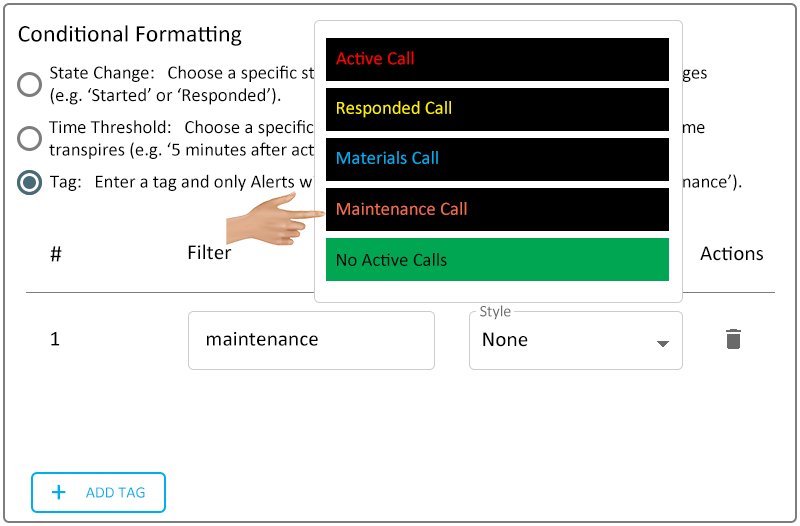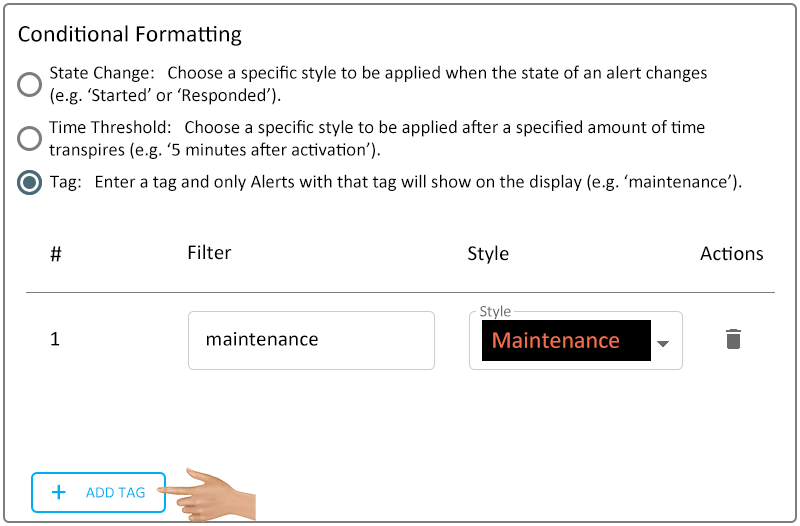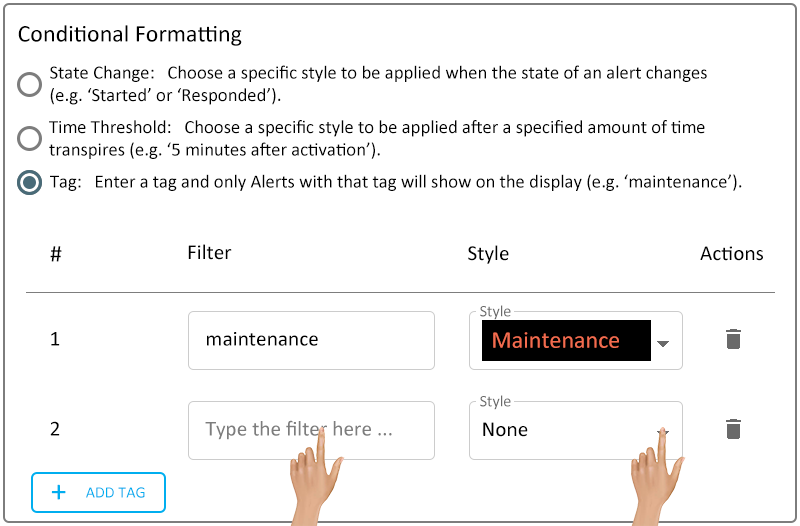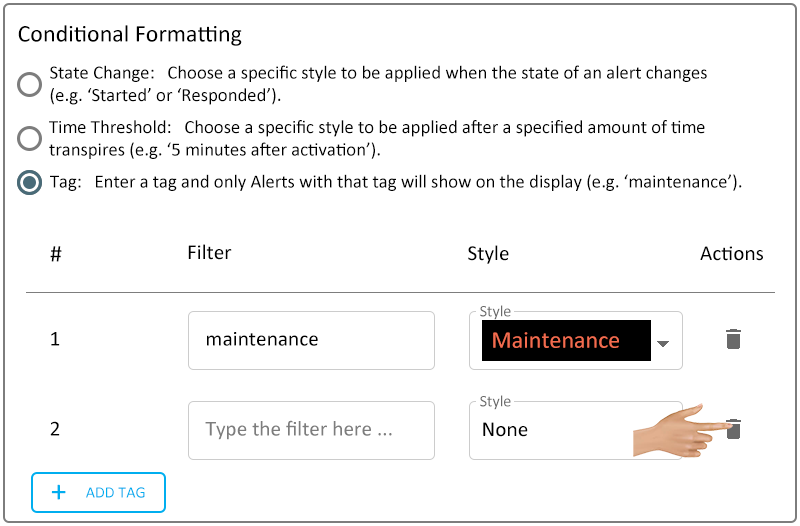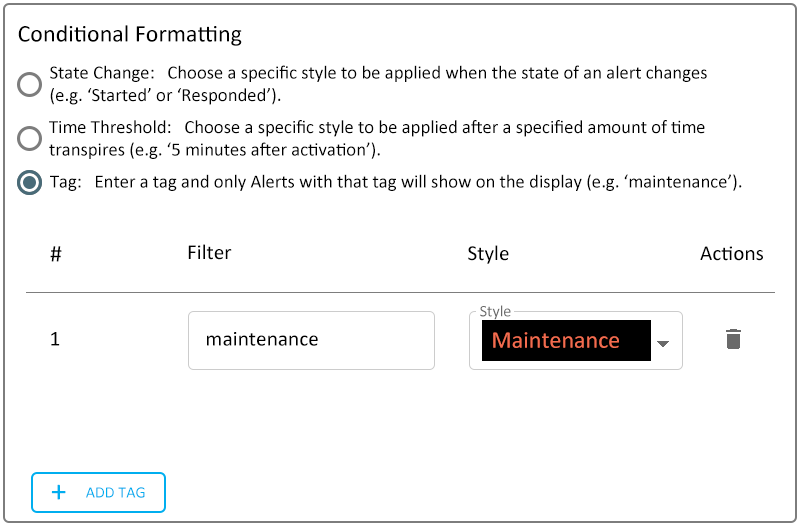Visuals - Messaging Conditional Formatting
From VersaVision Support
A Messaging Widget allows the user to setup a display for the Text Communications that are setup on Monitoring Points.
The Conditional Formatting section allows the user to define a Style to be used when a specific condition is met. There are 3 formatting options available - State Change, Time Threshold, and Tag.
This page will explain the use of each formatting option in the Conditional Formatting section of a Messaging Widget/Dashboard.
The State Change option allows the user to change the Style based on the Active state of the Alert. Specifically whether the Alert is Set/Started or Responded/Acknowledged.
Click on the radio button for State Change to ensure it is selected.
Click on the down arrow in the Started field to select the style to be used when the Alert has not been Responded To/Acknowledged.
A list of all the available Styles will show. Scroll through the styles and select the appropriate style for the Widget/Dashboard being created.
Click on the down arrow in the Responded field to select the style to be used when the Alert has been Responded To/Acknowledged.
A list of all the available Styles will show. Scroll through the styles and select the appropriate style for the Widget/Dashboard being created.
The Time Threshold option allows the user to change the Style based on the Amount of Time the Alert has been Active.
Click on the radio button for Time Threshold to ensure it is selected.
By default, there will be 1 Threshold shown/available set to "0 Seconds" indicating the style selected would be used whenever the Alert is Active. Generally, the Time would be left at "0" to show a message immediately.
To change the Time, click in the "H" field to enter the number of Hours to elapse before a Style is used.
The user can either type in a value for the Hours field or use the Up/Down arrows on the right side to Increase/Decrease the number.
Use the "M" field to enter a number of Minutes to elapse before a Style is used.
Use the "S" field to enter a number of Seconds to elapse before a Style is used.
Click on the down arrow in the Style field.
A list of all the available Styles will show. Scroll through the styles and select the appropriate style for the Widget/Dashboard being created.
To add more Time Thresholds click on the "Add Time Threshold" button.
Setup the new Threshold in the same way the first one was setup.
To remove a Threshold, click on the Delete icon.
The Threshold will be automatically removed, there will not be any warning message.
The Tag option allows the user to change the Style based on the Alert Tag.
- Example - the user wants the Maintenance Alerts to always shown in blue text.
Click on the radio button for Tag to ensure it is selected.
Click in the Filter field to enter the name of the Alert Tag.
Type in the name of the Alert Tag in the field. Use only lowercase letters and use an "_" for any spaces. The Tag should match the Alert Tag in the configuration EXACTLY.
Click on the down arrow in the Style field.
A list of all the available Styles will show. Scroll through the styles and select the appropriate style for the Widget/Dashboard being created.
To add more Tag Conditions click on the "Add Tag" button.
Setup the new Tag condition in the same way the first one was setup.
To remove a Tag Condition, click on the Delete icon.
The Tag Condition will be automatically removed, there will not be any warning message.

